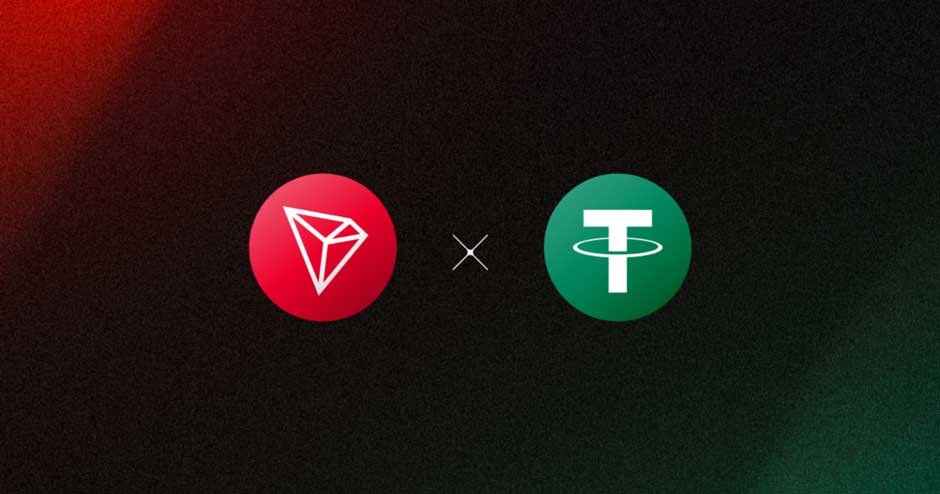Skip to the good bit
ToggleHow USDT Works Across Blockchains
Stablecoins like USDT (Tether) are tokens pegged 1:1 to the U.S. dollar. And USDT isn’t limited to just one blockchain—it exists across many networks. But that isn’t just a geeky detail. Different chains mean different costs, speeds, and risks when you send or store USDT.
Knowing which network to use saves you time and money. But using the wrong one can cost you both—you might overpay fees or even lose funds if you click the wrong network. So before you move USDT, it pays to check where you’re sending it and why.
In this article, you’ll learn the major chains that host USDT, how they compare, and what to watch out for. Let’s dive in.
Benefits and Trade-offs of Each Blockchain
Tron, BNB Smart Chain, and Solana offer the best mix of speed and low fees—and Ethereum gives unmatched security and compatibility.
- Tron (TRC‑20)
Fast and cheap. Transactions take seconds and cost under $1. But it’s more centralized, and recent fees have fluctuated up to ~$6. - BNB Smart Chain (BEP‑20)
Low cost and quick confirmation times. Compatible with Ethereum tools. But centralization is higher, which could reduce resistance to technical failures or attacks. - Solana (SPL)
Transactions cost mere cents—often $0.01 or less. Performance can be volatile, and when traffic spikes, fees can rise. - Ethereum (ERC‑20)
Most secure and widely supported across DeFi and exchanges.But it can be slow (minutes under congestion) and expensive—fees from $0.50 to $7. - Polygon, TON, and Others
Polygon offers near-instant transfers and very low fees—cheaper than Ethereum but less integrated. TON is emerging: super low fixed fees (~$0.01), backed by Telegram integration.
At‑a‑Glance Comparison Table
| Network | Avg Fee | Speed | Strengths | Drawbacks |
| Tron (TRC‑20) | <$1 | Seconds | Cheap, fast, widely used | Centralised, fee spikes |
| BNB Smart Chain | ~$0.10 | Seconds | Cost-effective, EVM compatible | Centralization risk |
| Solana (SPL) | <$0.05 | Sub‑second | Ultra‑low fee, high throughput | Volatile performance |
| Ethereum (ERC‑20) | $0.5–$7 | Minutes | Industry-standard, secure, DeFi-ready | High cost, slower under load |
| Polygon / TON etc. | <$0.01–$0.05 | Seconds | Low fee, fast, emerging ecosystems | Less liquidity, fewer integrations |
These differences matter depending on your goal—sending lots of small payments? Solana or Tron is smart. Moving $10,000? Ethereum’s security may be worth it.
Major Blockchains That Support USDT
USDT spans many blockchains—from Bitcoin’s Omni layer to modern smart contract platforms—each with its own standards and features. You can also buy USDT with a debit card through crypto exchange platforms that support different networks, depending on your preference for fees, speed, or app compatibility.
- Bitcoin (Omni Layer)
The original USDT. It’s built on Bitcoin’s Omni protocol. But Tether stopped minting new Omni USDT in August 2023 and will freeze existing balances by September 1, 2025.
- Ethereum (ERC‑20)
The most widely supported format for exchanges and dApps. It uses the popular ERC‑20 token standard.
- Tron (TRC‑20)
USDT on Tron uses TRC‑20 and offers fast, low‑cost transfers. Widely accepted.
- BNB Smart Chain / Binance Chain (BEP‑20)
USDT issued on BSC uses BEP‑20. Compatible with Ethereum tooling but runs on Binance’s network.
- Solana (SPL Token)
Fast, cheap USDT on Solana thanks to high throughput and low-cost SPL tokens.
- Avalanche (C‑Chain; ASC‑20)
USDT on Avalanche exists as ASC‑20 tokens on the smart contract chain. Launched in May 2021.
- Algorand, EOS, Liquid, Bitcoin Cash (SLP), Tezos, Polkadot, Kusama, Celo, Cosmos (Kava), TON, Aptos
USDT also lives on these chains, each using local standards (Algorand Asset, EOSIO, SLP, SPL, etc.).
Risks and Common Mistakes When Using USDT Across Chains
Main point: Sending USDT over the wrong network is the most common and costly mistake.
And it happens often. One user said:
“I mistakenly sent USDT from Binance to Coinbase using the opbnb network…lost the funds.”
- Wrong network transfers
You pick ERC‑20, TRC‑20, or BEP‑20—but the receiver uses a different one. You could lose funds permanently. Wallets may not support recovery. - Bridge exploits and smart contract issues
Bridges let you move tokens across chains. But hacks have drained over $2.6 billion in crypto. USDT bridges are not immune. - Unsupported formats at exchanges or wallets
Some platforms only accept specific USDT variants. Resources may refuse deposits on others. Always double-check. - Gas fee and congestion errors
Picking a low fee can stall transactions or cause outright failure. Ethereum’s gas swings wildly under load. - Smart contract limitations
USDT contracts can be paused or blacklisted. Users don’t always realize USDT isn’t fully decentralized.
How to avoid these mistakes:
- Always match the network shown in your wallet and receiver’s platform.
- Send a small test amount first to confirm everything works.
- Check wallet and exchange USDT support before depositing.
- Use trusted bridges and only move large sums after understanding risks.
- Track gas fees and adjust to ensure your transaction clears reliably.
How to Choose the Right Blockchain for Your USDT
Pick the blockchain that fits your goal—Ethereum for trust, Tron or BNB for speed and savings.
If you’re trading or moving large sums, Ethereum (ERC-20) is the most secure and reliable choice. It’s supported by nearly every major exchange and wallet, and it works well for long-term storage. But it can be expensive, especially when the network is busy.
If you need to send small amounts often, Tron (TRC-20) or BNB Smart Chain (BEP-20) make more sense. They offer fast transfers with very low fees, which is why they’re popular for remittances and frequent payments.
For users focused on volume and speed, Solana and Polygon are strong options. Solana can process thousands of transactions per second for just pennies. Polygon also keeps fees low and has solid DeFi support.
Mobile-first users might prefer TON. It’s integrated with Telegram and charges a fixed micro-fee, making it ideal for quick transfers through messaging apps.
And if you’re into DeFi or earning interest, Ethereum and Polygon give you better access to liquidity pools, lending protocols, and stablecoin yield strategies.
The right chain depends on what you care about—cost, speed, security, or ecosystem access. Match the chain to the job, and always double-check the network before sending.
Why USDT Exists on Multiple Blockchains
Main point: USDT spreads across many chains to boost speed, cut cost, and reach more users.
And Tether builds support on many networks to improve access, liquidity, and integration across crypto ecosystems. But the real reasons go deeper.
Tether launched USDT on Ethereum first, using ERC‑20. But congestion and gas costs made it clear that relying on one chain limited reach. So Tether added support on Tron, BNB Smart Chain, Solana, Avalanche, Algorand, and many others.
Multi-chain deployment cuts fees. Transfers on Tron and Solana cost mere cents compared to dollars on Ethereum. That makes it practical for remittances, micro‑payments, and frequent trades .
Reaching users is another big reason. Different communities use different blockchains. And USDT’s presence on those networks means access to wallets, exchanges, DeFi platforms, and payment tools in each ecosystem .
It also boosts liquidity. Markets on multiple chains let traders arbitrage between them and move capital faster—strengthening USDT’s peg and usage everywhere.
Finally, spreading across chains creates resilience. If one network has downtime or high fees, users can switch to another. And that keeps USDT flowing smoothly.
How USDT Works Technically on Each Chain
USDT functions as a token smart contract on different blockchains, but each has unique rules for minting, transferring, pausing, and blacklisting.
On each supported blockchain, Tether issues USDT through a smart contract or protocol. For example, on Ethereum it uses an ERC‑20 contract with standard methods like transfer, balanceOf, and approve. Other chains use equivalent standards: TRC‑20 on Tron, BEP‑20 on BNB Smart Chain, SPL on Solana, and so on.
Issuance happens when users deposit fiat currency with Tether. Tether’s team then mints an equal number of USDT tokens on the chosen blockchain and sends them to user addresses. Redeeming works in reverse—users send tokens back to Tether, and the tokens are burned while Tether returns dollars.
Smart contracts include advanced features. They allow Tether to pause all transfers—halting activity in emergencies. They can also blacklist or freeze user addresses, blocking specific wallets from sending or receiving USDT.
In Tron’s smart contract logs, you can see events like pause, blacklist, issue, transfer, and unpause—all traceable through on‑chain records.
The blacklisting process adds a delay. First a multisig transaction signals a pending blacklist, then a second one finalizes it. That delay window—sometimes over 40 minutes—can allow users to move funds before the freeze becomes effective.
Wrapping and bridging USDT—moving it from one chain to another—adds more complexity. Wrapped tokens rely on intermediary contracts or bridges giving users a new token version on another chain. But these add risk: bridge hacks have lost billions in funds.
And although USDT uses similar techniques across chains, it’s not universal. Each network handles fees, contract upgrades, and pause mechanisms differently. That is why users must check format compatibility and network support before transacting.
Conclusion and Practical Tips
USDT is everywhere. You’ll find it on Ethereum, Tron, Solana, BNB Smart Chain, and newer networks like TON and Avalanche. This makes it flexible, fast, and cheap to use—if you choose the right network. But every chain has trade-offs. Some are faster. Some are cheaper. Some offer better security. And some don’t work well with every wallet or exchange.
What matters most is choosing the version that fits your needs. Use Ethereum for security and DeFi. Choose Tron or BNB if you care about low fees. Go with Solana or Polygon if speed is your top priority.
And always check the network before sending USDT. Make sure the sender and receiver are using the same version—ERC-20, TRC-20, BEP-20, or something else. If you’re unsure, send a small test first. It could save you from a big mistake.







